Emma Jameson – 12 July, 2015
Each object or installation extends, complicates, or multiplies the ‘story' of the others on display. As such, the gallery becomes a circular meditative space in which concepts, memories, and reactions are prompted and explored, but never brought to a final ‘conclusive' moment. 'The Things We Talked About' engages in a suggestive 'non-narrative' space, in which the ‘narrative' speaks not of linear progression but rather a contemplative, multi-layered stasis.
Auckland
Moyra Davey, Dorine van Meel, Ruth Buchanan, Marie Shannon, Alicia Frankovich, lightreading, Hue & Cry
The things we talked about
Curated by Abby Cunnane
12 June - 17 July 2015
Narrative is rendered evocative, ephemeral, and fluid in The things we talked about currently on show at St Paul St Gallery. Rather than constructing a progressive narrative that is characterised by a linear constancy, St Paul St Gallery in this exhibition presents a fluid space in which the subjective thoughts, responses and memory associations of the maker and viewer transition, overlap, and coalesce. The gallery space is meditative, suggestive, and reminiscent; enabling the viewer to perceive, acknowledge, and reflect in an organic process of conceptual evolution.
The Things We Talked About is an ambiguous, personable, redolent title. “Things” implies a multitude of colloquial considerations ranging from the significant to the incremental build-up of banal everyday circumstances into a more substantial whole. This is shared by “we”, an indefinite group of people engaged in an unspecified type of relationship, all brought together under a communal umbrella of common understanding, reciprocity, experience, and empathy. It is through the various artworks that “we” can “talk”: the artists through the process of making, the viewers in the process of looking, the curators in their organisation of the gallery space; collaboratively constituting a dynamic and layered discourse.
Each object or installation extends, complicates, or multiplies the ‘story’ of the others on display. As such, the gallery becomes a circular meditative space in which concepts, memories, and reactions are prompted and explored, but never brought to a final ‘conclusive’ moment. The Things We Talked About engages in a suggestive ‘non-narrative’ space, in which the ‘narrative’ speaks not of linear progression but rather a contemplative, multi-layered stasis.
This is particularly evident in Moyra Davey‘s video, Les Goddesses. The video takes as its inspiration the writing and life of Mary Wollstonecraft, both in its subject matter and in its structure. In the introduction to The Wrongs of Woman, or Maria (1798), Wollstonecraft writes that, “in many instances I could have made the incidents more dramatic, would I have sacrificed my main object, the desire of exhibiting the misery and oppression, peculiar to women, that arise out of the partial laws and customs of society. In the invention of the story, this view restrained my fancy; and the history ought rather to be considered, as of woman, than of an individual”.
In writing about female narratives, Margaret Homans (1994) postulates that Wollstonecraft’s book embodies a feminist critique of the imprisoning linearity of ‘male’ narratives in that the novel’s heroine and structure exhibit an inconclusive stasis that is symptomatic of the female experience in a patriarchal society. Wollstonecraft doesn’t present workable alternatives or a feasible resolution for her character, but rather concentrates her prose on evoking the situational circumstances endured by an individual woman within a given social context.
This narrative structure is similarly adopted by Davey. Les Goddesses forges links between Wollstonecraft’s experiences and that of her own family, particularly her sisters. The points of similarity range from the incidental (i.e. ages at which certain events happened) to the more profound. Links are drawn between emotional sensibilities, tragic events, and responses to environmental circumstances. Although segmented into sections punctuated by naming subtitles, the headings do not clearly distinguish members of Davey’s family from that of Wollstonecraft. As such, the video feels like a continuous loop in which temporal and geographical borders are crossed and intertwined. This circularity, this stasis, is exacerbated by Davey’s monotonous voice, which has the effect of eluding a sense of progression in favour of propagating a sense of an inevitable, never ending ‘sameness’.
This video is not so much story telling, but a reconfiguring of autobiography, and how that personal narrative is perceived both by the self and the others. The monotonous voice serves a narratival component in addition to its structural qualities, in that it links to Davey’s appointment with a homeopath, during which her life experiences were recounted in a tired flat voice. Les Goddesses can be seen as an extension of this appointment. Through linking her life to Wollstonecraft’s, Davey constructs an existential space through which she configures her own personal encounters and those of her family, simultaneously seeking to find an overarching significance or purpose - yet accepting with a certain finality all that has happened, and the implications for this in present and future time. She counteracts a fear of the real, and her autobiographical reticence, with a continuous time-based media that confronts her state of being and her orientation with the world.
This theme is continued in the gallery’s second room with Ruth Buchanan’s An image of a solid and Alicia Frankovich’s Lover. Frankovich’s neon work speaks of contemplation, fluidity, weight, and suspension (within both a temporal and physical space). Hanging from a clothes hanger, the curving line of the neon light leads our eye into a circular motion, while its electrical cord simultaneously anchors the work against the walls and towards the floor of the gallery space. The work is both weightless and grounded, floating against the white walls yet essentially grounded to a specific location.
Buchanan’s work extends this exploration of weight, volume, and the sensations that it can provoke in the viewing process. Criss-crossing fabrics segment the gallery space into different ‘stages’ of phenomenological and perceptual experience, constructing a ‘narrative’ structure of the gallery space and the viewing process it prompts. The curvilinear lines of the fabric lead our eye through to the different media ‘stations’. Diaphanous and rippling, they do not function as abrupt full stops, but rather provide commas, parentheses, or semi-colons for the reading of our space. The darkness of the rope and the textural perforations of the fabric contrast with the gallery’s stark white walls, while the deep mauve of the final curtain seems to bleed and trail into the floor. The gallery space as such becomes an ephemeral, fluid zone in which our perceptions and self-positioning undergo an organic experiential process.
It is within this environment that we see Marie Shannon‘s The Aachen Faxes. Like Davey’s Les Goddesses, this video plays in a continuous loop, blurring any sense of time and narrative progression. Chronicling the artist’s time apart from her partner Julian Dashper while he was in Aachen, the video speaks of human presence and absence, and the constancy and gradual change associated with this. Similarly to Davey’s work, the sound element is essential to the layering of the narrative of this work. Seen without sound, the excerpts from their letters seem detached and disconnected. It is through listening to the cello music that the sentences are invested with a sense of loss, hope, and finality. This imbues this work with a potent multi-layered narrative of personal experience, relatable as equally to the viewer as it is personally evocative of the artist.
The subjective responses of the viewer are similarly paramount in Dorine van Meel‘s At Least the Oranges Come from Sicily and Instead to Meet Strangers. Layered with sound, text, and images, the videos present an unsettling multi-sensory field that is open to narrative interpretation and navigation. In At Least the Oranges Come from Sicily pieces of text are slowly revealed and concealed, referencing different forms of communication and how these come alive or talk to us through the process of reading and acknowledging. Instead to Meet Strangers in turn presents the surreal, uncertain social landscape experienced by a teenager, in which normative experiences are rendered powerfully suggestive by virtue of subjective interpretation. As the torchlight traverses over the domestic interior, while the narrator speaks of “whispering voices in the dark”, we have to wonder: what is real? What is fiction? What are the distinguishable elements between a felt, experienced autobiography and the ‘facts’ that constitute a biography? As the video states: “we never can tell the truth as a whole, not even what has happened in the room (we are in)”.
This transient line between fact and invention was evidenced in the performative piece, Private Hire, iterated by Sonya Lacey and Sarah Rose’s artist collaborative, lightreading, on the opening night. Entrants into the car entered into a conversation with Sonya, in which she described two slide projections. Visual depiction and verbal description became intertwined, revealing the parameters for connotative and interpretive variation. The readings relating to the David LaChapelle and Rihanna legal case similarly explored the vulnerability of personal and projected self and narrative. What is said can be misinterpreted, misquoted, misheard, or misused, and this is posited against another voice that is undergoing analogous re-shapings once iterated in the external, public realm.
The things we talked about transforms St Paul St into a space of discourse comprised of visual and verbal texts that are punctuated by their positioning in relation to each other. Personal experience, narrative, and construction of these elements are simultaneously tangible and knowable; fluid and imperceptible. This concept is exemplified in the posters produced by Hue & Cry, which utilise the metaphors of mirrors and windows to connote the act of looking outwards and inwards, and the states of flux that this can provoke: “I want a poem to demand that both myself and reader challenge our assumptions, for it to be both a window and a mirror”.
Sonya Lacey and Sarah Rose continue this theme in lightreading’s holographic glasses, Private Hire (sunglasses), and the Maserati car for the opening night’s performance of Private Hire. The reflective lens of the glasses and the transfers of the window screen of the car rendered the outwards looking process limited and difficult (or in the case of the glasses, rendered it imposisble), and these restrictions resided in the connotative materiality of the objects themselves. The works seem to suggest then, the tension between ‘inner’ and ‘outer’ looking. Does looking outwards promote a richer ‘inner’ life? Or does social conditioning render this impossible? What then happens to the inner being - can it extend beyond its empirical limitations? Can it become ‘property’ that can be known and possessed, as suggested by the readings relating to the David LaChapelle and Rihanna legal case inside the car?
All these works in this show construct a rich, thoughtful narrative that is subjective and multi-layered, utilising the physical and emotive properties of their specific media to project a different ‘voice’. The result is not a cacophony of dissonance, but rather a continuous perceptual ‘hum’ across and into which different aesthetic harmonies are introduced and mixed. The ‘hum’ attests to the fact that in the process of talking, perceiving, acknowledging, the line between certainty of fact and palpability of experience becomes overwhelmingly malleable, biomorphic, and exponential in its possibilities. The things we talked about too is an organic exhibition, necessitating a prolonged, meditative and personable viewing experience that continues, enriches, and completes the conversation between the artists, the space, the media, and their audience.
Emma Jameson
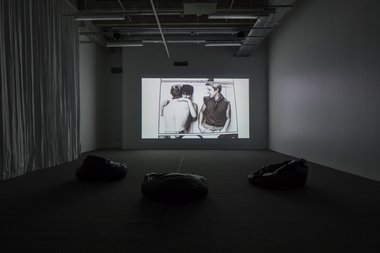
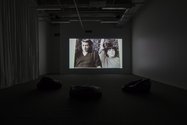
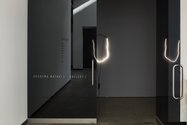

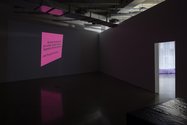

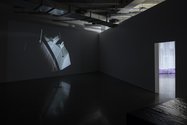
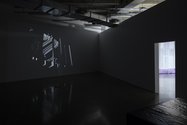
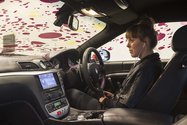

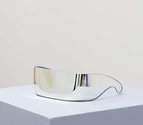
 Two Rooms presents a program of residencies and projects
Two Rooms presents a program of residencies and projects Advertising in this column
Advertising in this column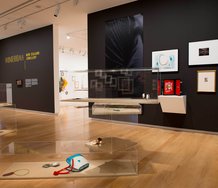


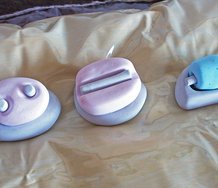
This Discussion has 0 comments.
Comment
Participate
Register to Participate.
Sign in
Sign in to an existing account.